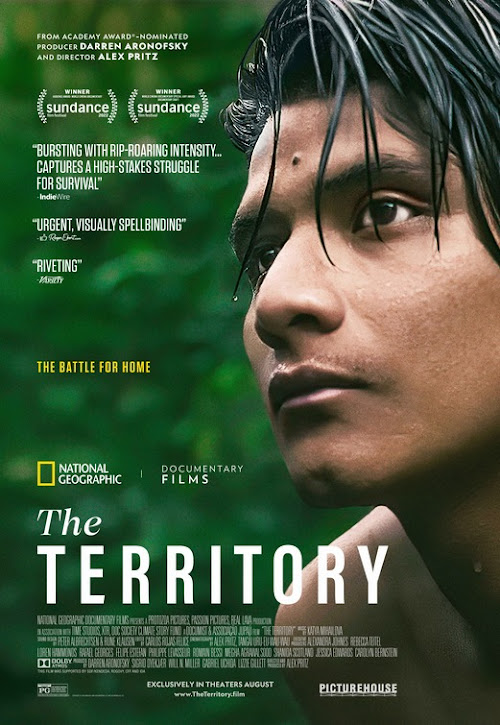Funny Pages, the feature-length directorial debut of Owen Kline, lets you know right away if this movie is going to be up your alley. We're introduced to our protagonist, High Schooler senior Robert Bleichner (Daniel Zolghadri), talking with art teacher Mr. Katano (Stephen Adly Guirgis), to discuss some drawings Bleichner has sketched. Katano is highly encouraging of his pupil, but the encounter takes on a new disturbing level once this middle-aged man volunteers to be sketched by Bleichner. The ulterior motives behind his support of this teenager become clear as he disrobes entirely in front of Bleichner. This is quickly followed up by Bleichner making a mad dash out of the classroom, Katano trying to force his student to get in his car for a ride home, and then a sudden car crash, all before the title of Funny Pages comes on-screen. Strap in folks, we're in for an especially grim dark comedy.
From there, Funny Pages settles into a groove in exploring Bleichner suddenly deciding he wants to never return to school again. He's going to set out on his own, eschew the prospect of college, and pursue his dream of being a cartoonist. Abandoning his parents and clingy pal Miles (Miles Emanuel), Robert gets a job working for a pro bono attorney, which leads to him encountering former Image Comics employee Wallace (Matthew Maher). In Wallace, Robert sees a potential teacher, a gateway to an industry he desperately wants to be a part of. But, much like anything in Robert's life, nothing turns out to be that simple.
Something that's immediately admirable about Funny Pages is how much it commits to a grimy aesthetic. This is happily reinforced by how the movies been shot on 16mm film by cinematographers Sean Price Williams and Hunter Zimny. This lends an immediate tangibility to the textures in the frame, but there's also a welcome inherent imperfection to the images we're seeing. The cracks in the visuals make them feel like the perfect vessel to capture the tormented people and crumbling buildings on-screen. An imperfect world like this one would feel so inappropriate for the glossy sheen of digital cameras. Huzzah, then, that a more retro style of camerawork has been embraced for this story.
With a pervasive aura of scumminess coming from the 16mm cinematography, Funny Pages continues this aesthetic by featuring a screenplay (also penned by Kline) that never wavers from making the people we're seeing on-screen so thoroughly unlikeable. Too many movies of this ilk try so hard in the third act to offer a tidy "redemption" arc for our wayward hero, but the people who start out as unlikeable in Funny Pages tend to end that way. This leads to lots of quality cringe comedy, particularly a rendezvous between Bleichner and Wallace on Christmas involving the latter character getting unspeakably overwhelmed or Bleichner's misguided idea of how to provoke a pharmacist. There's also a shocking amount of resilience in the running gag of Miles being an encouraging light in Bleichner's life but always getting treated like garbage, probably because Bleichner's rejections of Miles are always nicely underplayed.
With wall-to-wall unpleasantness around, Funny Pages won't be to everyone's liking, but I found that, much like your average Far Side comic, it tickled my funny bone and kept my interest. Part of that was just the consistently interesting 16mm cinematography, but it was also Kline's commitment to always finding a new bottom for Bleichner to sink to. Like so many teenagers, Bleichner is a bit on the obnoxious side, particularly when he's talking about what comics you "should" like. Funny Pages makes this guy tolerable just by constantly throwing him through the wringer. This is not somebody that moviegoers should walk away admiring (though God knows some toxic dudebros online will probably think otherwise), but rather a much darker figure whose selfishness only gets him into even more turmoil. There's also a quiet sense of tragedy in how the only way he knows how to process the world (through rendering it through disturbingly-realized comics) is also a way that, thanks to the mocking caricatures he draws, constantly alienates people around him.
Kline's direction of all this disturbing mayhem is quite assured, particularly in guiding the performances of the actors. Under the direction of this filmmaker, for instance, Daniel Zolghadri lends distinctive layers to cinema's umpteenth portrayal of an angsty teenager. Meanwhile, Matthew Maher delivers a very compelling performance as Wallace that feels like a fascinating evolution of his usual persona in his character actor roles. Maher conveys a genuine sense of chilling unpredictability here, there's a volatile nature of his portrayal of Wallace that suggests he suffers from deep mental health issues he likely cannot afford to get treated properly. Maher can have you at once feeling sympathetic towards what's informing Wallace's actions while also fearing what he's capable of when agitated.
Funny Pages may not add be a groundbreaking slice of American indie cinema, but if it hits your wavelength, you'll almost certainly walk away satisfied. In his first feature-length directorial exercise Owen Kline shows a remarkable ability to not bristle away from either following dark and disturbed characters to their inevitable endpoints or bold visual choices. Combining these unique traits with some humorous burts of dry and dark humor (Michael Townsend Wright slayed me with each of his quiet line deliveries as oddball roommate Barry) and a short and sweet runtime of 86 minutes means that Funny Pages is worth checking out if it seems like it'd be up your alley. To judge whether or not Funny Pages would be your cup of tea, just gauge your excitement over the prospect of watching comedy reminiscent of a Nathan Fielder show told through the cinematography of a Josh and Benny Safdie movie.






